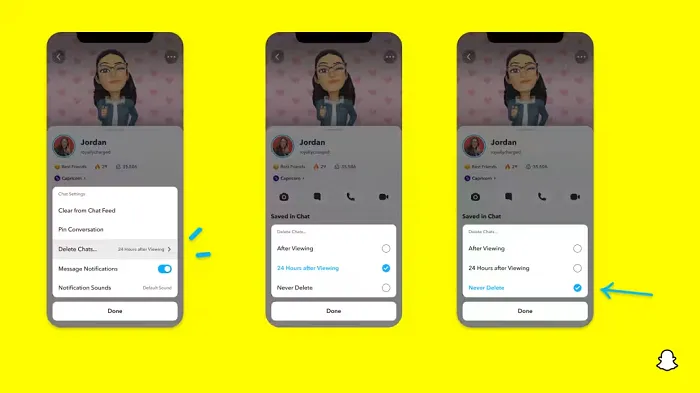SOCIAL
Facebook Acquires GIF Platform GIPHY, Which Powers GIF Search on Various platforms

Facebook has announced that it has acquired GIF platform GIPHY in a deal reported to be worth around $400 million.

GIPHY is the most popular GIF database on the web, with its 500 million daily active users viewing more than 11 million hours of GIFs every day through various surfaces. GIPHY has been able to maximize its usage by offering API integration to a range of websites – including Facebook, Instagram, Twitter and TikTok, among others.
Now, GIPHY will be brought into the Instagram team – as per Facebook:
“A lot of people in our community already know and love GIPHY. In fact, 50% of GIPHY’s traffic comes from the Facebook family of apps, half of that from Instagram alone. By bringing Instagram and GIPHY together, we can make it easier for people to find the perfect GIFs and stickers in Stories and Direct.”
So what does that mean for those other platforms that also use GIPHY to power their GIF search functions? Well, nothing… yet.
As explained by GIPHY:
“And for our API/SDK partners and developers: GIPHY’s GIFs, Stickers, Emojis, etc. aren’t going anywhere. We will continue to make GIPHY openly available to the wider ecosystem.”
So what, exactly, does Facebook have planned for its new toy?
In the announcement, Facebook doesn’t reveal much, only noting that the integration of GIPHY and Instagram will “accelerate how people use visual communication to connect with each other”. Which doesn’t really mean anything.
GIPHY says that:
“GIPHY’s Stickers were the perfect fit for layering on Instagram Stories, while our GIF search allowed everyone to capture that perfect emotion in Instagram’s DMs. Based on the success of those collaborations (and many others) we know that there are exciting times ahead of us.”
As noted, GIFs have proven particularly popular on Instagram, so further integration with Stories makes sense, though there’s no indication of exactly how that will look as yet.
In February, Instagram added the capacity to reply to Stories with GIFs – using its GIPHY integration – which was the last GIF-related announcement from the company prior to today’s acquisition news.
That could provide some indicator of where they’re looking with future GIF plans, though you’d expect that Instagram will have something more significant in the works.
Of course, Facebook will also glean new branding and data-tracking benefits, both through the expanded exposure of the new ‘GIPHY by Facebook’ brand, and usage of GIPHY content across the web. Google purchased GIF platform Tenor back in 2018, which it’s since used to better utilize GIFs inside Google images and other services, while it also has the advantage of being able to track more data trends via GIF usage.
More data, and understanding usage trends, is valuable, though likely not quite worth the $400 million price tag on its own in this respect.
But then again, maybe I’m undervaluing the potential value of GIFs as an indicator of emotional sentiment. Tenor, for example, has repeatedly touted the value of its ‘Emotional Graph’, which it’s able to map based on GIF usage across the web.
Maybe, by getting more insight into GIF usage, Facebook will be able to add emotional insight into its ad targeting capacity in order to improve response – if you knew, for example, that clusters of people were more commonly expressing certain emotions, that could make them more open to specific messaging, or products, which could help Facebook further enhance engagement.
Essentially, there’s no definitive outline of what the deal means for the various elements at this stage, but it seems likely that GIPHY will continue to operate as it has done – though there is a chance that Facebook could cut off rising competitors like TikTok at some stage (or, alternatively, that apps using GIPHY’s API will switch it off to avoid Facebook learning about in-app GIF usage).
Hopefully, we’ll see some more interesting GIF integrations within Instagram Stories coming soon.
SOCIAL
Snapchat Explores New Messaging Retention Feature: A Game-Changer or Risky Move?

In a recent announcement, Snapchat revealed a groundbreaking update that challenges its traditional design ethos. The platform is experimenting with an option that allows users to defy the 24-hour auto-delete rule, a feature synonymous with Snapchat’s ephemeral messaging model.
The proposed change aims to introduce a “Never delete” option in messaging retention settings, aligning Snapchat more closely with conventional messaging apps. While this move may blur Snapchat’s distinctive selling point, Snap appears convinced of its necessity.
According to Snap, the decision stems from user feedback and a commitment to innovation based on user needs. The company aims to provide greater flexibility and control over conversations, catering to the preferences of its community.
Currently undergoing trials in select markets, the new feature empowers users to adjust retention settings on a conversation-by-conversation basis. Flexibility remains paramount, with participants able to modify settings within chats and receive in-chat notifications to ensure transparency.
Snapchat underscores that the default auto-delete feature will persist, reinforcing its design philosophy centered on ephemerality. However, with the app gaining traction as a primary messaging platform, the option offers users a means to preserve longer chat histories.
The update marks a pivotal moment for Snapchat, renowned for its disappearing message premise, especially popular among younger demographics. Retaining this focus has been pivotal to Snapchat’s identity, but the shift suggests a broader strategy aimed at diversifying its user base.
This strategy may appeal particularly to older demographics, potentially extending Snapchat’s relevance as users age. By emulating features of conventional messaging platforms, Snapchat seeks to enhance its appeal and broaden its reach.
Yet, the introduction of message retention poses questions about Snapchat’s uniqueness. While addressing user demands, the risk of diluting Snapchat’s distinctiveness looms large.
As Snapchat ventures into uncharted territory, the outcome of this experiment remains uncertain. Will message retention propel Snapchat to new heights, or will it compromise the platform’s uniqueness?
Only time will tell.
SOCIAL
Catering to specific audience boosts your business, says accountant turned coach

While it is tempting to try to appeal to a broad audience, the founder of alcohol-free coaching service Just the Tonic, Sandra Parker, believes the best thing you can do for your business is focus on your niche. Here’s how she did just that.
When running a business, reaching out to as many clients as possible can be tempting. But it also risks making your marketing “too generic,” warns Sandra Parker, the founder of Just The Tonic Coaching.
“From the very start of my business, I knew exactly who I could help and who I couldn’t,” Parker told My Biggest Lessons.
Parker struggled with alcohol dependence as a young professional. Today, her business targets high-achieving individuals who face challenges similar to those she had early in her career.
“I understand their frustrations, I understand their fears, and I understand their coping mechanisms and the stories they’re telling themselves,” Parker said. “Because of that, I’m able to market very effectively, to speak in a language that they understand, and am able to reach them.”Â
“I believe that it’s really important that you know exactly who your customer or your client is, and you target them, and you resist the temptation to make your marketing too generic to try and reach everyone,” she explained.
“If you speak specifically to your target clients, you will reach them, and I believe that’s the way that you’re going to be more successful.
Watch the video for more of Sandra Parker’s biggest lessons.
SOCIAL
Instagram Tests Live-Stream Games to Enhance Engagement

Instagram’s testing out some new options to help spice up your live-streams in the app, with some live broadcasters now able to select a game that they can play with viewers in-stream.
As you can see in these example screens, posted by Ahmed Ghanem, some creators now have the option to play either “This or That”, a question and answer prompt that you can share with your viewers, or “Trivia”, to generate more engagement within your IG live-streams.
That could be a simple way to spark more conversation and interaction, which could then lead into further engagement opportunities from your live audience.
Meta’s been exploring more ways to make live-streaming a bigger consideration for IG creators, with a view to live-streams potentially catching on with more users.
That includes the gradual expansion of its “Stars” live-stream donation program, giving more creators in more regions a means to accept donations from live-stream viewers, while back in December, Instagram also added some new options to make it easier to go live using third-party tools via desktop PCs.
Live streaming has been a major shift in China, where shopping live-streams, in particular, have led to massive opportunities for streaming platforms. They haven’t caught on in the same way in Western regions, but as TikTok and YouTube look to push live-stream adoption, there is still a chance that they will become a much bigger element in future.
Which is why IG is also trying to stay in touch, and add more ways for its creators to engage via streams. Live-stream games is another element within this, which could make this a better community-building, and potentially sales-driving option.
We’ve asked Instagram for more information on this test, and we’ll update this post if/when we hear back.
-

 PPC5 days ago
PPC5 days agoHow the TikTok Algorithm Works in 2024 (+9 Ways to Go Viral)
-

 SEO6 days ago
SEO6 days agoBlog Post Checklist: Check All Prior to Hitting “Publish”
-

 SEO4 days ago
SEO4 days agoHow to Use Keywords for SEO: The Complete Beginner’s Guide
-

 MARKETING5 days ago
MARKETING5 days agoHow To Protect Your People and Brand
-

 PPC6 days ago
PPC6 days agoHow to Craft Compelling Google Ads for eCommerce
-

 SEARCHENGINES6 days ago
SEARCHENGINES6 days agoGoogle Started Enforcing The Site Reputation Abuse Policy
-

 MARKETING4 days ago
MARKETING4 days agoThe Ultimate Guide to Email Marketing
-

 PPC6 days ago
PPC6 days agoHow to Brainstorm Business Ideas: 9 Fool-Proof Approaches



